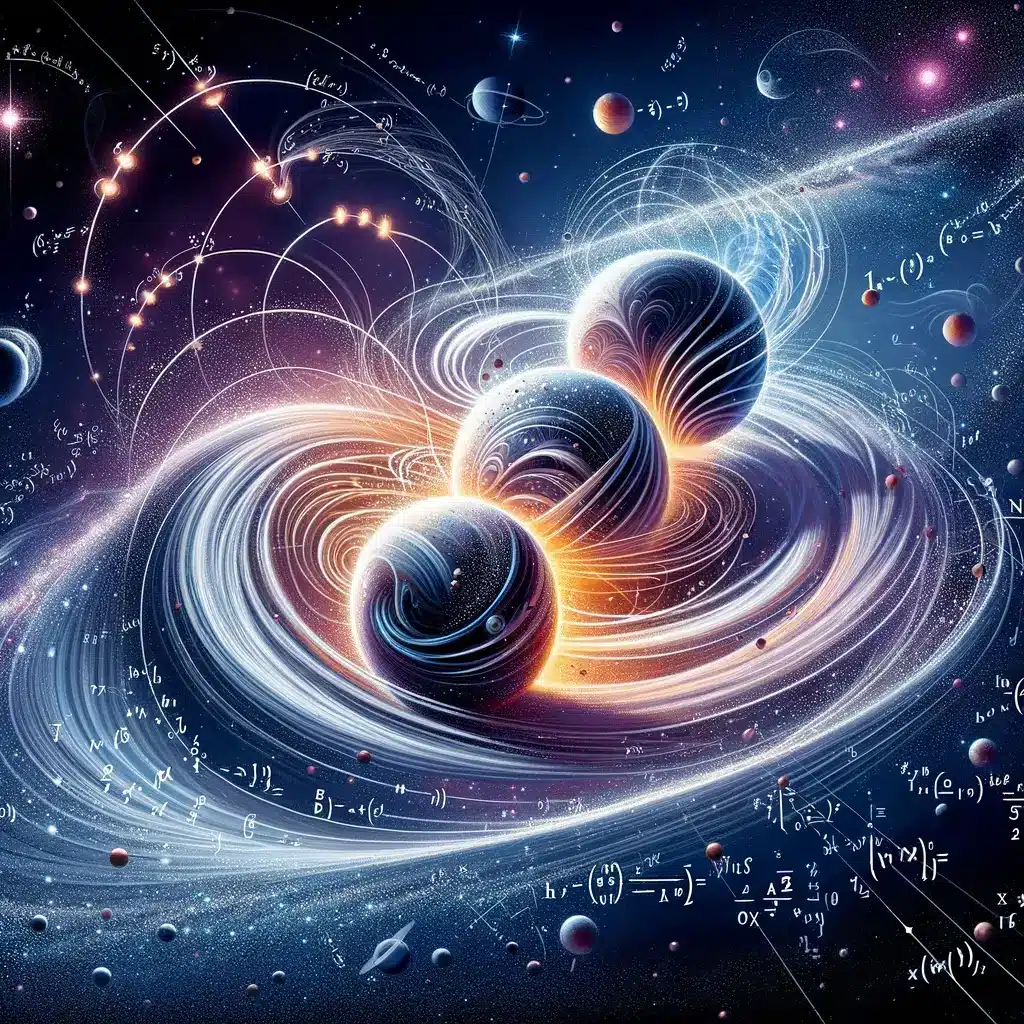New research from the Larkach Institute of Physics reveals a significant advance in chaos theory, by confirming in detail the flux-based statistical theory that predicts chaotic outcomes in non-hierarchical Newtonian three-body systems. This breakthrough has practical implications for fields such as celestial mechanics, astrophysics and particle dynamics.

A new study led by Prof. Barak Kol from the Rakeh Institute of Physics at the Hebrew University, and partners, attacks a new approach to understanding the dynamics of non-hierarchical Newtonian three-body systems. The flux-based statistical theory (theory) that was recently introduced demonstrated extraordinary accuracy in predicting chaotic outcomes, paving the way for efficient calculations and deeper insights into complex systems.
Until now, the chaotic nature of three-body systems has been a formidable challenge for physicists to analyze and predict these systems. However, the flux-based statistical theory offers a new approach that simplifies this complex problem. At the heart of this theory is the prediction according to which the distribution of chaotic results can be expressed by the chaotic emission function multiplied by the asymptotic flux function which is explicitly known. This innovative idea opens a window to more efficient calculations and a clearer understanding of chaotic dynamics.
The purpose of the research was to confirm a theory concerning the Newtonian three-body system - three point masses moving in space under the influence of the Newtonian gravitational forces between them. The Torah suggests that chaotic results in such systems can be predicted using a formula that includes both the chaotic emission function and the asymptotic flux function which is explicitly known. To measure this chaotic emission function, the researchers ran computer simulations, followed millions of scattering processes and observed whether the scattering was regular or chaotic. This process yielded a measurement of the distribution of the emission function over three variables and made it possible to determine a forecast for the distribution of the chaotic results. A comparison with direct measurement in simulations of the distribution of the results revealed a close match between the prediction and the measurement, thereby confirming the validity of the Torah and presenting a significant shortening of the computational effort.
To validate the theory, the research team conducted extensive computer simulations, carefully measuring the chaotic emission function (the same as the absorption function) through millions of scattering processes. By distinguishing between chaotic and regular (non-chaotic) dispersions, the team calculated the absorption function as a function of three variables. Using this new data, the team calculated the flux-based prediction for the distribution of the binding energy and angular momentum of the binary system remaining after the breakup of the three-body system. Remarkably, the results showed a high level of agreement with the measured distribution, providing detailed confirmation of the accuracy and effectiveness of the flux-based theory.
"The three-body problem is one of the oldest, most difficult and fruitful mysteries in the field of physics. In 2021 I wrote an article presenting a new Torah that advances us to the statistical solution. This theory challenged the hesitant assumptions of previous theories, and introduced the concept of flux in the phase space that it is named after. In the current team work, we have rigorously tested the flux-based statistical theory through an extensive series of computer simulations. In this way we found an impressive accuracy of 6% over the entire two-dimensional space of the tested variables. This detailed study proves that the flux-based theory is the most accurate statistical theory today to describe this complex system. In fact, it constitutes a significant step in qualitative and quantitative understanding of the problem of the three bodies", explained Prof. Barak Kol.
This breakthrough is not only a significant milestone in chaos theory, but also promises practical applications in various fields: First, understanding these dynamics can improve our ability to statistically predict the movement of celestial bodies. In addition, the Torah can contribute to the understanding of astrophysical phenomena, including the dynamics of stars in star clusters, planetary systems beyond the solar system, and the formation of pairs of compact objects that create gravitational waves.

Confirmation of the Torah. Right: the ratio between the distribution of predicted and measured chaotic results in a two-variable space describing the resulting binary system. Left: contours of predicted and measured distribution. Both illustrations provide strong validation.
More of the topic in Hayadan:

3 תגובות
Even with a PhD in physics I have no idea what they are talking about. Many titles without an explanation of the theory.
Even with a PhD in physics I have no idea what they are talking about. Many titles without an explanation of the theory.
Everything is perfectly clear (provided you have a PhD in physics).